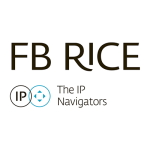Undertaking research and development (R&D) is an inherently risky venture – through striving to develop a new or improved product or process, some companies reap huge benefits while others are yet to realise financial gains for their years of work.
However risky it may be, R&D is also critical for a country’s economy and progress with a successful project resulting in job growth and further investment into new facilities, technologies, and skill development. Therefore many governments around the world seek to mitigate the risk companies are exposed to by implementing a tax offset for expenditure related to R&D – with few more generous than Australia’s Research and Development Tax Incentive (RDTI) programme.
A deeper dive into the RDTI
The RDTI is a joint government programme administered by the Australian Taxation Office and the Department of Industry, Innovation and Science (AusIndustry), providing companies with a tax offset between 38.5% and 46.5%, depending on their annual turnover.
For companies with a turnover of less than AU$20 million, an offset of 18.5% above the current corporate tax rate (resulting in 43.5% tax offset currently) is claimable, which becomes refundable if the company is in losses. This is of key benefit to start-up and pre revenue companies engaged in R&D.
For larger companies, a non-refundable offset of either 38.5% or 46.5% is claimable, depending on the ‘R&D intensity’ in the company, that is, the proportion of R&D expenditure compared to total expenditure.
The RDTI is a broad, industry-based and self-assessed program in which companies incorporated in Australia can offset the cost of their R&D activities by lodging an application annually with AusIndustry. This offset can then be claimed through the tax return, providing particular benefit to SMEs, who are able to cash out the benefit when in losses.
What costs are claimable for the RDTI?
R&D expenditure can include cost categories such as salary and wages, consultant/contractors, direct costs, and depreciation on R&D equipment to the extent they contributed to the R&D. A portion of overheads, such as rent, can also be claimable.
Generally excluded costs are those that would either occur regardless (deemed ‘business as usual’), while specifically excluded costs include accounting and legal fees, staff amenities, and sadly, IP costs. However, IP may still be claimable provided an additional ‘dominant purpose’ test’ is satisfied.
While generally done for commercial reasons, you may also choose to protect your IP on other grounds. The dominant purpose test is assessed on a case-by-case basis and, where IP costs are incurred by the company during the experimentation process (and a significant reason for securing a patent is to enable the continuation of experimentation), may allow for the inclusion of IP costs. For example, drug development and biotechnology patents regularly satisfy this test as the patent is often secured early to enable the R&D to continue.
The link between IP and the RDTI
While a patent is not required to claim under the RDTI, lodging a patent is a clear indication of the R&D undertaken by a company and the novelty of their work. The experimental evidence used as part of the patent drafting process is also required in the RDTI assessment, so there is a great deal of overlap between drafting both RDTI and patent applications.
Within the application, companies are required to detail the ‘new knowledge’ gained by their experimentation. AusIndustry considers this section crucial in order to determine whether the research was novel and therefore eligible for the RDTI. Fortunately for companies describing patented products and processes, the new knowledge requirement is easily met since patents, by their nature, need to prove exactly this.
Companies are also required to detail their understanding of the current knowledge prior to undertaking research as well as any unknown outcomes associated with their experimentation. This current knowledge can be determined in a number of ways including through a literature review, discussions with experts, or a patentability search. Companies with a patented product will have explored at least one of these avenues, with prior art searches oft-cited in the RDTI report. These searches are even often claimable under the RDTI program as a supporting activity.
At FB Rice, we combine RDTI and IP services as part of our broader IP strategy, reducing your time burden and increasing the strength of the R&D tax claim. This also positions us to be able to assess your patent, prior art searching, and related costs against the dominant purpose test for inclusion within your claim.
R&D activities not leading to a patent (including unsuccessful R&D) is also claimable and companies can recoup these costs through the programme. This goes some way towards mitigating the risks and related costs for Australian companies undertaking R&D.
Cory Smith
R&D Tax Consultant, FB Rice
Kate Mahady
Partner, R&D Tax Consultant, FB Rice












